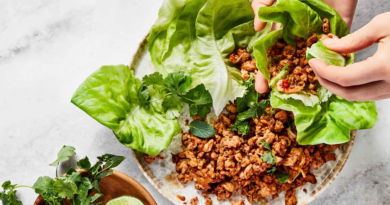Shabu-Shabu Noodle Soup
Shabu-shabu is a popular Japanese-style hot pot dish, influenced by Chinese hot pot, featuring loads of fresh vegetables, thinly sliced beef, and assorted sauces. “Shabu-shabu” is an onomatopoeic reference to the swish-swish sound of the meat as it gets dipped (and quickly cooked) in the seasoned broth. Shabu-shabu is also very popular in Korea, where you will find similarities and differences in both broth and dipping sauces.
One of my favorite places to enjoy shabu-shabu in Korea is at the food-filled basement of Lotte Department Store in Seoul’s Myeong-dong area. Like many department store lower levels, there is no shortage of delights, offered as grocery, food court, and restaurant experiences. Shabujin, the shabu-shabu counter that often has lines, features individual pots in front of each customer, to allow for ultimate customization. You get a heap of vegetables as a base, and you can also add in specialty items like thinly sliced kabocha squash, king mushrooms, and (my favorite) fresh wheat noodles to help finish off the shabu-shabu experience.
In this recipe, I turn shabu-shabu into a one-pot beef noodle soup, which comes together quickly for a weeknight dinner crowd. Instant dashi is one of the stars of the show, anchoring the broth with the distinct shabu-shabu broth flavor. Cabbage and shiitake mushrooms also contribute to the soup’s flavor, adding both sweetness and umami, respectively. Pre-shaved beef, often employed in dishes like Philly cheese steak, is another favorite ingredient of mine; and here, just a bit brings deep flavor to an otherwise delicately seasoned broth. The key here is to keep the shaved beef cold in the fridge until just before using (yes, I realize this goes against everything we tell you about bringing your meat to room temp!). Otherwise, it’s harder to separate the “leaves” of beef from each other. If you can’t get your hands on shaved beef, freeze a piece of sirloin or similar cut for about an hour or more to make knife work easier.
Shabu-shabu is a layered flavor experience, and here I mimic that in making sure the longer-to-cook items like cabbage go in first. Don’t forget to skim any scum that might arise from the meat with a skimmer for the cleanest-tasting broth. Fresh noodles also take no time to cook, so don’t be tempted to walk away! The noodles’ starch helps give the ensuing broth great body. I forgo external dipping sauces, instead adding soy sauce to the broth itself and serving with lemon wedges to mimic a fresh ponzu-style brightness at the end.




